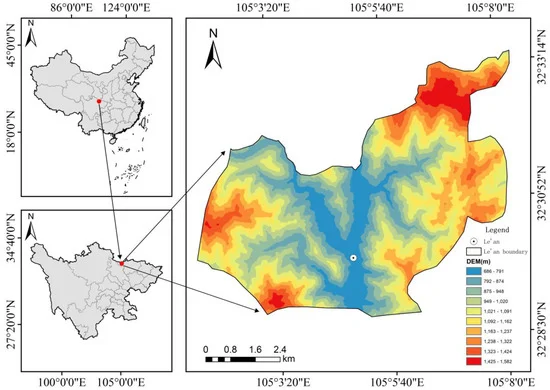China’s Unprecedented Challenge: How Are Extreme Weather Events Escalating?
sandbox:/mnt/data/china_geological_disasters_and_extreme_weather_2024.html
In 2024, China is grappling with an intensifying wave of geological disasters and extreme weather events. With record-breaking temperatures and frequent natural disasters like floods, droughts, and landslides, the country is at a critical juncture in climate adaptation. Just in recent months, heavy rains have caused landslides and flooding across provinces, pushing over 400,000 residents to evacuate and placing immense strain on infrastructure, from roads to dams. Meanwhile, rising temperatures in cities like Chongqing have intensified urban heat, sparking energy crises as demand for cooling soars
Hottest on Record: How Has the Heat Impacted Lives and Crops?
sandbox:/mnt/data/china_geological_disasters_and_extreme_weather_2024.html , with temperatures exceeding 40°C (104°F) in multiple regions. In Xinjiang, parts of the province even broke 125°F. This relentless heat has had profound impacts:
- Rice and Wheat Crop Failures: High temperatures have stunted growth in several key agricultural areas, pushing up grain prices and threatening food security.
- Power Shortages: Increased energy demands for air conditioning have strained the grid, particularly in cities like Hangzhou, which banned outdoor lighting to conserve electricityChina DailyCarbon Brief.
Flooding: A Never-Ending Crisis?
Flooding, another recurring issue, has forced China to re-evaluate its disaster readiness. The country has experienced over sandbox:/mnt/data/china_geological_disasters_and_extreme_weather_2024.html , with unprecedented rainfall volumes in provinces like Hunan and Guangxi. China’s Ministry of Water Resources issued 649 million yuan in flood relief to assist impacted areas. Yet, the sheer frequency of these disasters underscores the challenge of forecasting and preparing for floods in a landscape made unpredictable by climate shifts

How Is the Government Responding? Strategic Shifts in Climate Resilience
In response to the climate threat, China has ramped up its investment in disaster response infrastructure and monitoring. The Chinese government has launched a range of initiatives aimed at shoring up resilience:
- Emergency Food Supply Chain: Over 59,000 emergency food outlets have been established, and grain market monitoring has been ramped up to stabilize prices in case of supply disruptionsChina Daily.
- National Climate Change Adaptation Strategy (2022–2035): This ambitious plan includes efforts to fortify agricultural, water, and urban infrastructure to better withstand climate impacts, though achieving these goals will demand substantial funding and coordination across local and national agenciesSouth China Morning Post.
FAQs on China’s Geological Disasters and Climate Adaptation
Q: Why is China experiencing such intense weather in 2024?
A: Factors like global climate change have intensified weather patterns, with phenomena like El Niño exacerbating heat and rainfall levels. This environmental shift is challenging sandbox:/mnt/data/china_geological_disasters_and_extreme_weather_2024.html disaster response framework and testing infrastructure resilience
Q: How is China addressing crop damage due to extreme weather?
A: China is boosting its food security strategy by enhancing grain reserves and diversifying crop sources. Emergency supply chains are also in place to mitigate shortages due to damaged harvests, helping maintain stable food prices amid global volatilitysandbox:/mnt/data/china_geological_disasters_and_extreme_weather_2024.html
Q: Is this year’s weather impacting China’s economic stability?
A: Yes, natural disasters have already resulted in billions in economic losses.sandbox:/mnt/data/china_geological_disasters_and_extreme_weather_2024.html Flood damages, energy strain, and agricultural setbacks are all contributing to this toll, prompting China to re-assess its economic policies to address climate resilience

Next Steps: Will Resilience Measures Be Enough?
China’s path forward involves both immediate and long-term measures. The government has set new renewable energy targets and strengthened sandbox:/mnt/data/china_geological_disasters_and_extreme_weather_2024.html measures to mitigate emissions and limit environmental damage. However, with such rapid climate changes, it remains to be seen if these adaptations can keep pace with the increasingly severe weather impacts.
For more on China’s climate challenges and resilience plans, explore resources from the Asia Society and other environmental policy centers, which provide insight into the evolving strategy for climate adaptation and resilience
By addressing these urgent questions and challenges, this guide sheds light on China’s 2024 battle with extreme weather and geological disasters, offering a realistic perspective on both the scope of the issue and the paths toward resilience.

